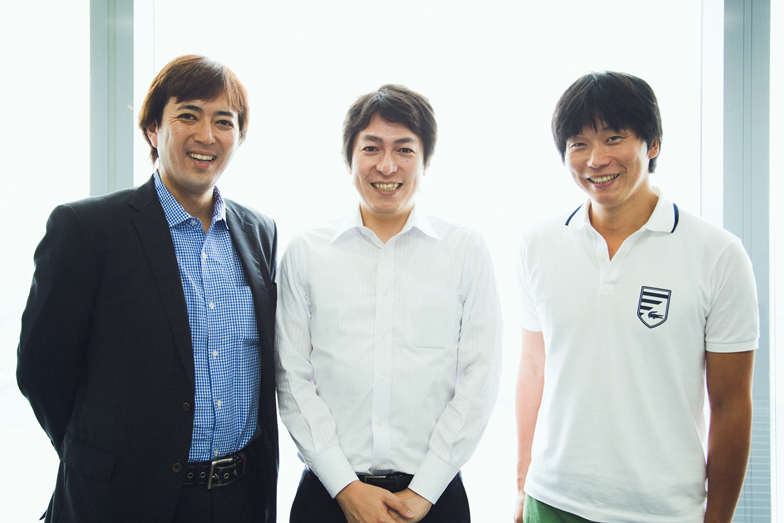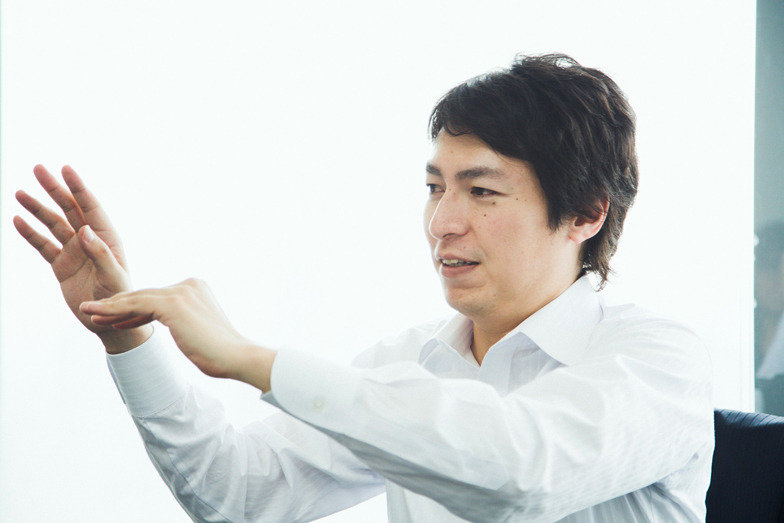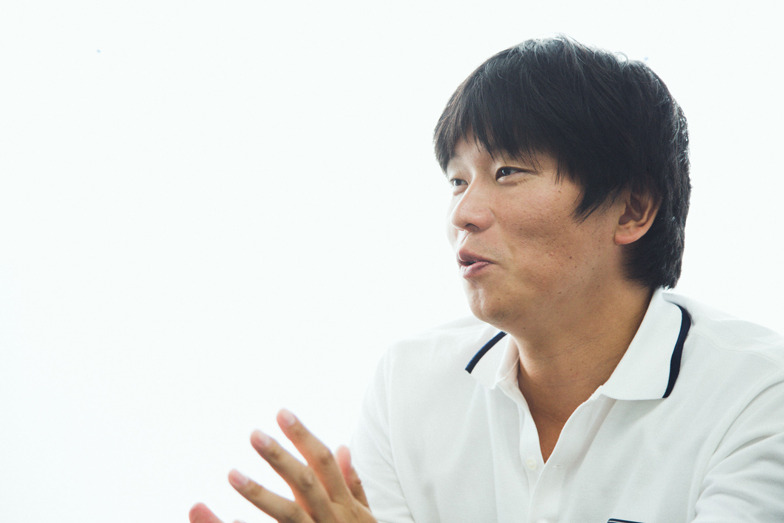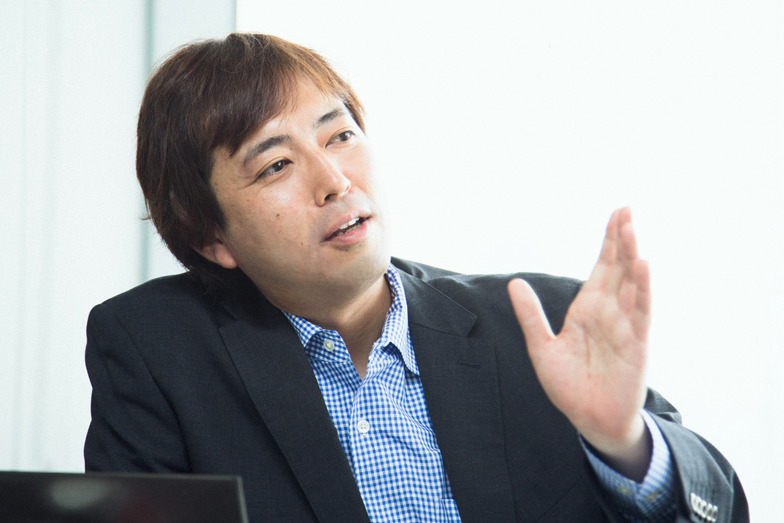In May, the Japan Racing Association (JRA) held an experiential campaign event using new technology to help people discover the excitement of horse racing.
Dentsu Inc. planning and implementation team members, Mr. Akio Morita and Mr. Kensaku Yamamoto, interviewed Mr. Ayumu Kozuka of Radio NIKKEI, who collaborated as a race commentator for the campaign.
Interview & Editing: Aki Kanahara, Dentsu Inc. Event & Space Design Bureau
Horse racing fans have been shaped by star horses
Morita: What are your thoughts on the current state of horse racing?
Kozuka: Being at the racetracks and the BS11 studio every week as an announcer, I feel that while sales peaked in the late 90s and have been gradually declining since, they have started to pick up a bit recently as the economic situation improves. However, you notice a lot of older people at the racetracks. Especially on Saturday mornings. I always think it would be great if fans my age or younger came too.
Morita: What about the gender ratio of the customers?
Kozuka: Men are proportionally more numerous. While I feel the JRA has implemented various initiatives and the number of female fans is increasing, in terms of ratio, I think men still outnumber women.
Yamamoto: You definitely see more women during the G1 races, right? I went to the Takarazuka Kinen recently, and there were so many female fans of Gold Ship running in the race.
Kozuka: That horse really has a huge fan base. I think it especially attracts a lot of female fans.
Morita: Do horses themselves gain fans?
Kozuka: Yes, horses have their own personalities, right? Gold Ship has a bit of a mischievous streak, so maybe that's why women are drawn to him. It feels a bit different from how fans have attached themselves to star horses in the past.
Yamamoto: You see girls wearing T-shirts with "Gold Ship" on them, or carrying tote bags and stuffed animals featuring the horse's character. Back when Deep Impact was at his peak, I used to see girls cheering with stuffed animals too. Seeing that same kind of scene now, I thought it was amazing.
Kozuka: When there's a strong horse, a horse that draws attention, more people think, "Maybe I'll go to the racetrack," or "Maybe I'll try betting."
How can we get people new to horse racing, especially young people, interested in it?
Morita: Having star horses helps, but the JRA recognizes we can't rely solely on that. We need to create a situation that attracts young people.
Kozuka: Today's young people connect easily through the internet and social media. Looking at Twitter, for example, there are tons of people posting horse photos left and right. I think there's definitely a way they develop interest starting from things like, "Oh, this horse is cute."
Morita: This time, we're implementing online initiatives and events specifically targeting people who haven't experienced horse racing yet, focusing on how to spark interest in those currently uninterested. Commentary is an absolutely essential factor in creating the world of horse racing. That's why, two years ago, we collaborated with Mr. Kozuka to create that incredible horse racing content in partnership with "Attack on Titan."

The "Attack on Japan Cup" held in the fall of 2013 generated significant buzz.
Kozuka: That's right! The "Attack on Japan Cup" was the first one. I had the pleasure of handling both the Japan Cup and the Arima Kinen back-to-back, which was a lot of fun.
Morita: It's a commentary experience quite different from actual horse racing, isn't it?
Kozuka: I've only been in the play-by-play career for just under 10 years, so I've never actually covered the real Japan Cup, Arima Kinen, or of course the Derby as an actual race. I ended up covering them online first, so to speak. There was that tension and excitement of thinking, "Ah, so this is what big races feel like." And of course, it was fun to be part of the world of such a super famous content like "Attack on Titan."
Morita: Then last fall, we teamed up with Ultraman for the "Ultra Arima Kinen" event in Akihabara, right?
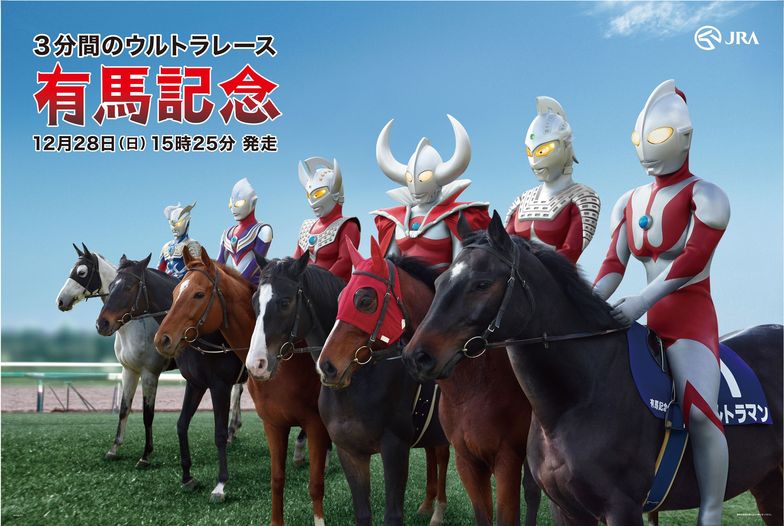
The street event "Ultra Arima Kinen" held in winter 2014.
Kozuka: Yes, I provided the voice for the movie.
Morita: Having you provide commentary for the footage we created—we really owe you a lot, Mr. Kozuka.
Kozuka: It's different from regular race commentary in terms of energy and vocal projection, but I enjoy using a voice I don't normally use. It's also a learning experience as an announcer.
Two Technology Projects: "STREET DERBY 360°" and "AIR DERBY"
Morita: As part of our ongoing efforts to provide young people with new horse racing experiences, we collaborated on the "STREET DERBY 360°" project in Shinjuku. This time, we aimed to create a deeper simulated horse racing experience using technology.
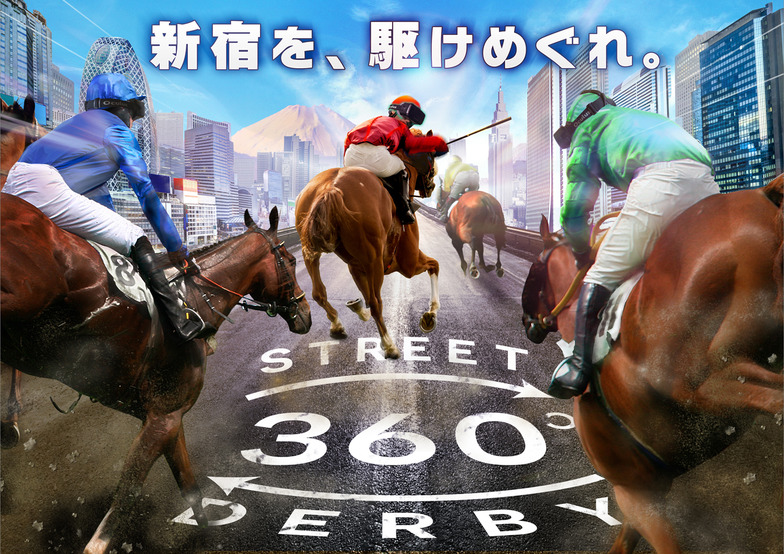
Morita: The Oculus experience is actually terrifying when you try it. Set in Shinjuku, participants experience a race through the city streets, using the event venue as their starting point.
First, you shoot up the wall of Takashimaya department store, then leap off its rooftop to enter the race, finally arriving at the racetrack. Falling off the rooftop with zero visibility around you is scarier than any roller coaster. Plus, you ride the "JOBA" horse-riding machine, which tilts on slopes and stairs. It feels like you're moving at incredible speeds, so some people almost fell off the "JOBA." It's not just visual—it's a full sensory experience.
Yamamoto: If we hadn't watched each person closely, they would have fallen off like they were falling from a horse.
Morita: The other project is "AIR DERBY." It uses Kinect to let you race while standing in front of a wall. Kinect captures your facial expressions, hand movements, and voice as you experience air horseback riding—or rather, air horse racing. Mr. Kozuka also provides live commentary for this content.
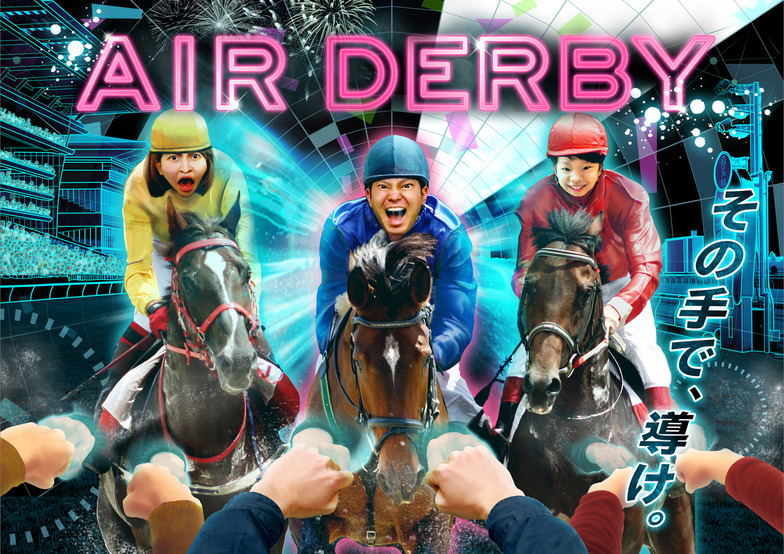
Yamamoto: This had a wide range of participants, from seniors to children, and everyone really enjoyed it.
Morita: Normally, horse racing is just something you watch, but experiencing it firsthand lets you feel the thrill of winning and losing.
Yamamoto: On paper, Kinect and Oculus look incredibly fun, but to the general public, they're still mysterious. People weren't very enthusiastic. It's not just about using technology or digital tools to create content; we have to properly consider how to get people to use it and how to convey the story.
Morita: The change in people's expressions before and after the experience was really striking, wasn't it?
Yamamoto: With a real experience, just one try will probably get them interested in horse racing. Watching it live, I realized how deeply it connects as communication. Everyone smiles. It feels like a completely different kind of communication compared to the ads and campaigns we usually handle.
Morita: But getting them to take that first step is tough.
Yamamoto: We need to meticulously plan how the staff interacts, how to make the scene of people playing the game look enjoyable, and how to get reserved Japanese people to physically participate in the street. Creating a fun atmosphere is crucial, something I felt strongly through this event.
Experiential events also have high PR impact.
Morita: The PR events were really lively too, weren't they?
Yamamoto: For the event where we had judoka Shinichi Shinohara and talent Shingo Yanagisawa experience "AIR DERBY," we invited Mr. Kozuka to serve as both host and commentator.
Kozuka: I was right there beside Yanagisawa-san and Shinohara-san as they tried "AIR DERBY," holding the mic and doing the commentary (laughs). I was the voice in the original footage too, but they actually turned that voice off just for the live event!
Morita: It was such a star-studded collaboration!
Kozuka: Yeah, it was a lot of fun.
Yamamoto: PR event visuals can get pretty formulaic sometimes. Using new tech like Kinect or Oculus for visuals feels like the perfect time to do it now. We even had a program that aired it for an incredibly long segment.
Kozuka: Since it was essentially a showdown between our two guests, I aimed for commentary that would hype them up. Both participants really got into it, and I think both the media and the audience got really excited. The Radio NIKKEI commentary is also the official commentary used by JRA, so I can't overly cheer for specific horses. This time, I hyped it up and hyped it up, really shouting my head off (laughs).
Morita: The most fun part of horse racing is the race itself. Listening to your commentary, Kozuka-san, I thought maybe technology has made it possible to experience something close to the real thing. Please let us challenge ourselves together in various projects going forward!
<End>



